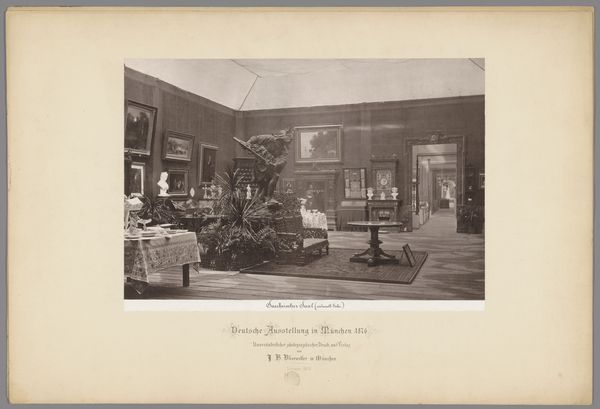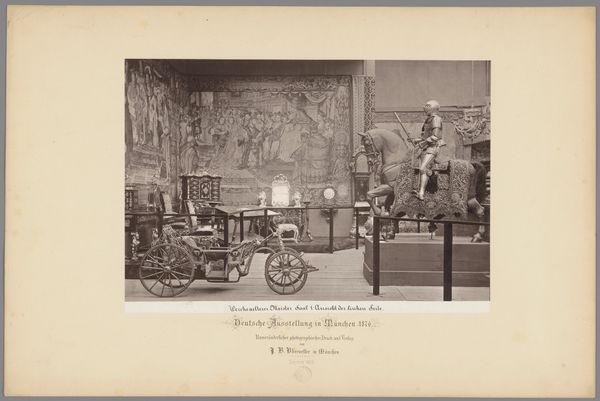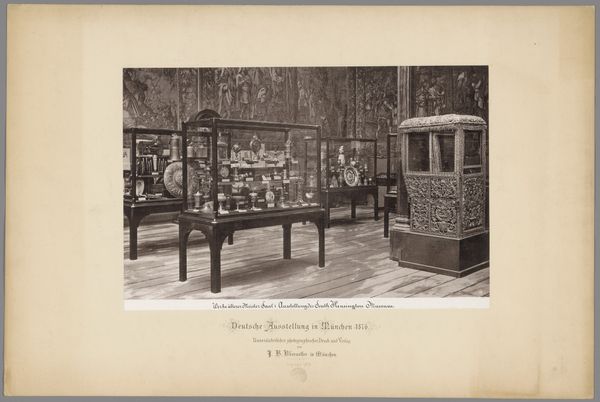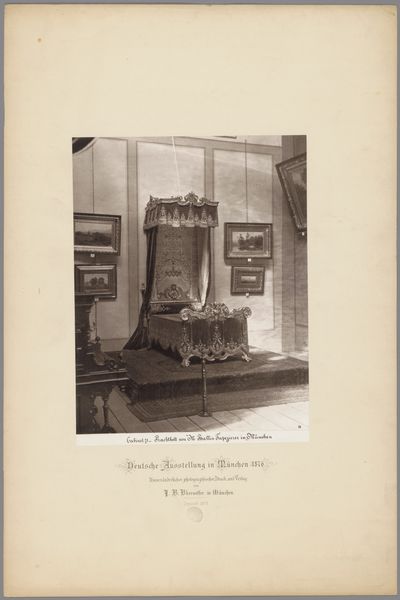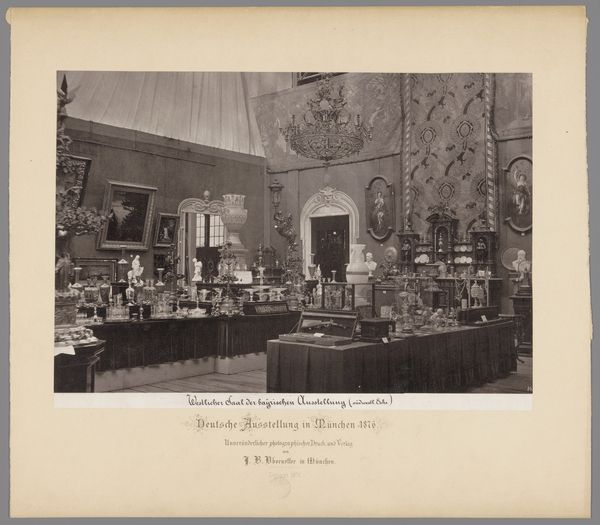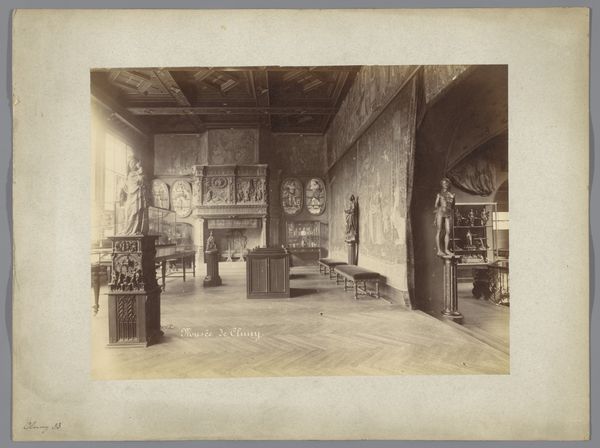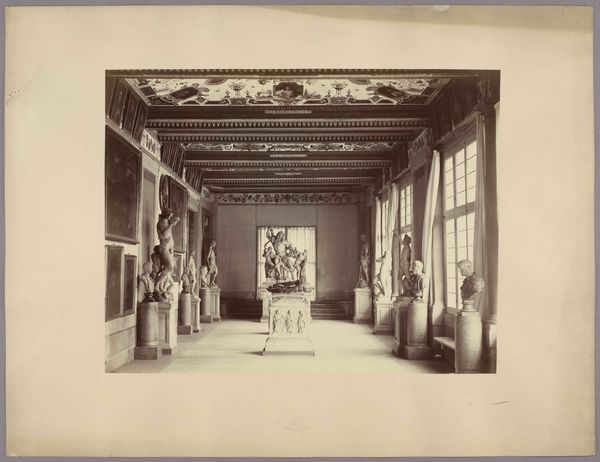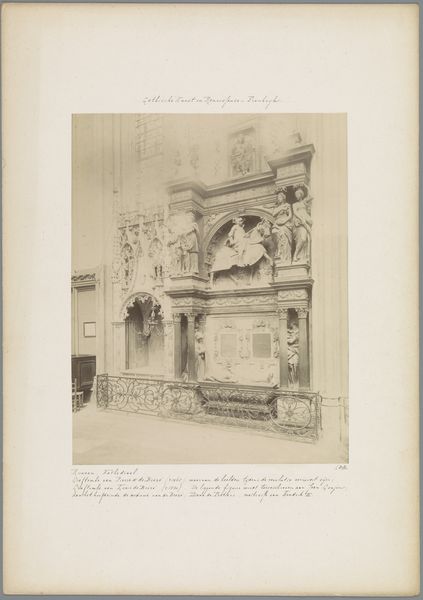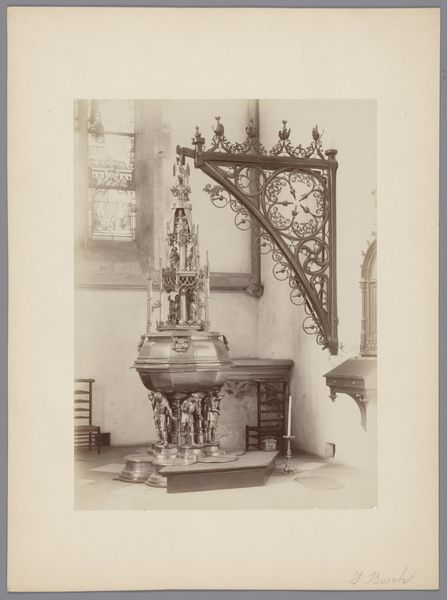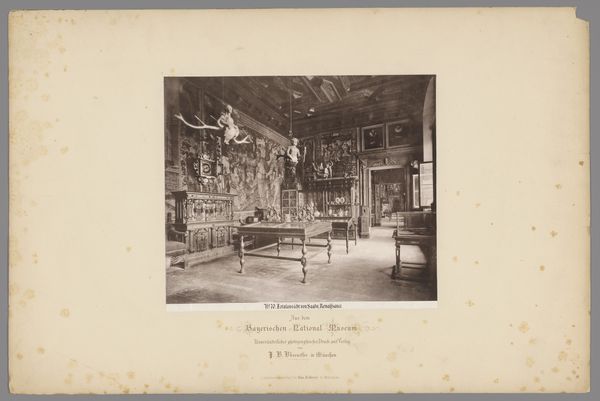
Opstelling van Beierse kunst in het Bayerisches Nationalmuseum te München 1876
0:00
0:00
Dimensions: height 201 mm, width 294 mm
Copyright: Rijks Museum: Open Domain
Editor: Here we have an image titled "Opstelling van Beierse kunst in het Bayerisches Nationalmuseum te München," created in 1876. It’s a photograph capturing an exhibition, offering a glimpse into how art was displayed back then. It almost feels like stepping into a time capsule. What strikes you most about this piece? Curator: Ah, a time capsule indeed! You know, what grabs me is how consciously staged this photo feels. It's not just about documenting the exhibition; it's crafting a *version* of it. Note how the photographer plays with depth, pulling you in, past those statues frozen in mid-gesture. Almost as though each object yearns to speak...do you feel that? Editor: Yes! I see the intentionality. The photographer isn't just passively recording; they are curating a perspective, similar to painting almost. Is that common for photographs from this era? Curator: Precisely! Photography in 1876 was still finding its artistic footing. Images such as this, showcasing artistic prowess *about* art were, in my eyes at least, flexing muscle; look what this camera can do! It makes me wonder though, does showcasing art in art dilute either work of art or does that act amplify meaning? I pose this question to you, and it poses a bigger question for me! Editor: Hmm. It is a great question. I think seeing these artifacts in the space gives the artworks a life outside a pedestal, maybe making history more relatable? So, does seeing it this way provide additional context that impacts what German Expressionism comes to be? Curator: It's certainly food for thought. You're picking up on key connections to later movements and ideas, how these things bloom from their past... In all honesty? Looking at this image has changed my perception, somewhat! I always appreciate those subtle pushes that take me outside of the ordinary. Editor: Me too! Thanks for sharing your perspective; I am going to see this art movement from a different point of view now.
Comments
No comments
Be the first to comment and join the conversation on the ultimate creative platform.
